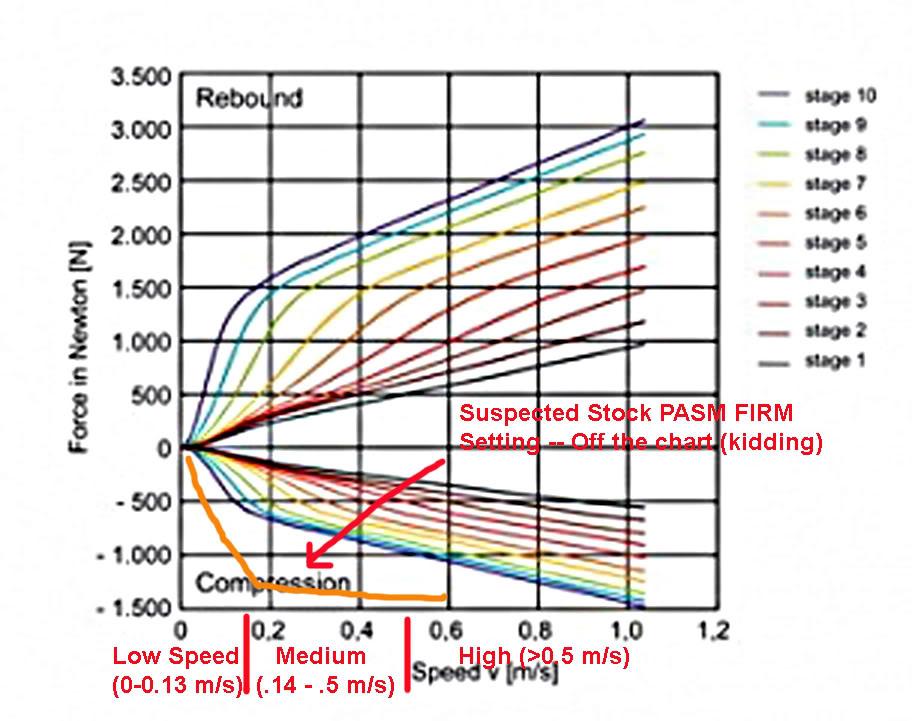You must be logged in to rate content!
4 minute(s) of a 612 minute read
12-26-2008
Sorry ("bad ***" ![]() ) pic above got deleted accidentally:
) pic above got deleted accidentally:

Thought you would be interested in a picture of Bilstein's test driver. LOL. It's only ad material and not sure how much "HE" is involved, but good to know the name is there.

1-29-2009
I have been looking for the shock dyno curves for the Bilstein coilover for a long time, finally found one on Bilstein Germany's web site -- duh. Unfortunately, I only found the one for the PSS10 version, not the PASM compatible version, aka Damptronic, so you see 10 curves, not 2. I've been told that the Damptronic uses the softest and stiffest curves for its 2 settings, with other adjustments made as the car sense the road and your driving, etc., but this is from Bilstein USA Help Desk, not official documents from Bilstein Germany itself.
In case you are curious how the shock dyno curves correlate with your driving, and to understand how coilovers differ, some more amateur level info:
The horizontal axis is the speed of the piston shaft. Events such as acceleration, cornering and braking cause slow compression of the spring/shaft, as your car squats, leans, or dives. This is referred to as low speed bump (bump = compression, not a bump on the road). To my thinking, this is related to the "good" effect of stiffer suspension -- the sporty handling.
OTOH, when you hit a curb or pothole, the spring and piston shaft is compressed at high speed, also known as, of course, high speed bump. This is related to the bad effect of stiffer spring -- the harsh ride.
This curve illustrates why for most amateurs, the Bilstein Damptronic version, where damping forces are automatically set, are so much more desireable than coilover where you have to set damping forces manually. Why? Even though in theory the manual setting of damping forces are more desirable, I can't tell you the number of times I've seen owners lost as to the why/how of damping force setting and never found the "Holy Grail." Manual setting of shock absorber damping is TOTAL black art reserved for the most advanced of drivers and setup people. Driver must be able to give feedback to setup man (understeer vs. oversteer, compliance), and setup man must know what to change for desirable result. I know certain suspension web site states just set up so and so for comfort and so and so for handling, but in reality this is NEVER this simple because whatever you do to increase comfort, will cause handling to suffer.
I've marked the graph using values from this excellent article -- written by, of all people, an anesthesiologist ![]() and a radiologist.
and a radiologist.
http://www.pca.org/panorama/sample_article_3.html
The KW Variant 3 coilover for example, allows one to adjust low speed bump; whereas a 4 Way Adjustable Moton allows adjustments of low speed bump (aka compression), high speed bump, low speed rebound, and high speed rebound. As mentioned, from my reading of past postings, simply spending mega $ for a sophisticated 4 way Moton definitely does not guarantee happiness. It should be reserved for experienced & very advanced level drivers and tuners. I believe that for a majority of amateur drivers, the simple Damptronic might actually be the best.

